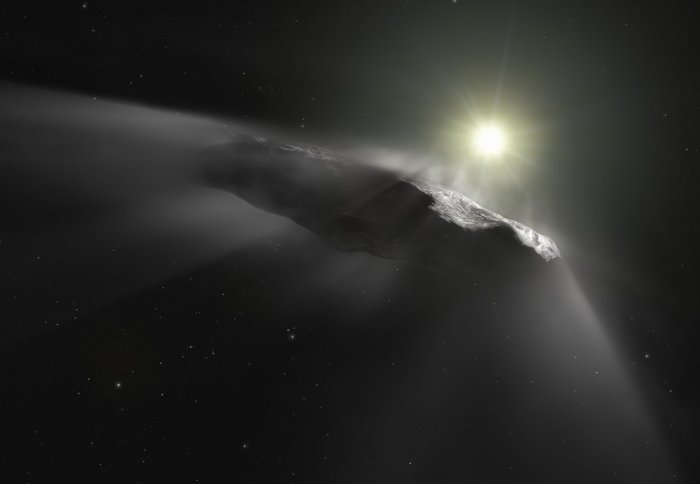Comet chasing and Animal AI: News from the College

Here’s a batch of fresh news and announcements from across Imperial.
From Imperial tech on board a comet-chasing spacecraft, to an AI competition inspired by the animal kingdom, here is some quick-read news from across the College.
Chasing comets

The European Space Agency has selected a comet-intercepting mission for launch in 2028 with Imperial kit on board.
‘Comet Interceptor’ is a fast-class mission, meaning it has a much shorter time between selection and implementation than most missions. To help with the short turnaround, the mission will piggyback on a larger mission to Earth orbit.
Once there, the mission, which consists of three smaller spacecraft, will wait until a ‘pristine’ comet enters the inner solar system for the first time. Previously studied comets already travelled closer to the sun for at least several decades, meaning they are altered, but a new comet would be more similar to the original composition of the solar system.
Read more about the mission on the European Space Agency’s website.
Bridging gaps

The Kaliningrad Museum of World Ocean, Russia, has selected an Imperial academic’s "Amber Bridge" design among the top 10 international bridge designs, from around 100 submissions.
Dr Stanislava Boskovic, visiting academic at the Department of Civil and Environmental Engineering, is an international architect who lectures on city design and urban transformations in Swiss, Italian, Russian and Spanish universities.
Dr Boskovic said: “I believe that developing solutions to the pressing challenges of contemporary architecture and urban environment goes hand-in-hand with developments in scientific approaches under the umbrella of 'complexity science.' Amber Bridge was inspired in particular by Graph Theory, unveiled to me by Prof Anthony Constantinides, the pioneering expert in the field."
Professor Constantinides said: "Dr Boskovic's work is an outstanding result of the marriage of talent and Imperial’s brand of creative problem solving by combining seemingly unrelated areas. It is very satisfying to see aspects of my own work have helped to catalyse this remarkable design.”
Physics medallists

Two Imperial researchers have been awarded medals in the annual Institute of Physics (IOP) awards.
Professor Roy Taylor, from the Department of Physics, received one of the IOP’s top awards, the Michael Faraday Medal and Prize. He is awarded for his extensive, internationally leading contributions to the development of ultrafast-laser sources and pioneering fundamental studies of nonlinear fibre optics that have translated to scientific and commercial application.

Dr Jonathan Breeze, from the Department of Materials, won the early-career Henry Moseley Medal and Prize for his pioneering work on room-temperature solid-state masers. His breakthrough demonstration of continuous-wave room-temperature diamond masers will pave the way for a new generation of optical-microwave quantum devices.
Read more on the Institute of Physics website.
Animal eyes on AI
 What happens when you combine animals, AI, and an Olympic-athlete mindset? The Animal-AI Olympics, of course!
What happens when you combine animals, AI, and an Olympic-athlete mindset? The Animal-AI Olympics, of course!
Imperial has launched an AI competition inspired by animal cognition.
Entrants will build AI systems that solve tasks in a simulated environment, like how animals solve tasks in the real world. The total prize pool has an equivalent value of $32,000.
The final submission should be an AI capable of retrieving food in a similar way to animals.
Competition leader Dr Matthew Crosby, of the Department of Computing, said: “It's up to you to create an AI that understands the physics of the virtual environment and can solve as many of our 300 tests as possible.”
The competition has been made possible with help from our sponsors and collaborators: Amazon Web Services, Unity Technologies, WBA-Initiative, AIJ, GoodAI, EvalAI, and the Leverhulme Centre for the Future of Intelligence.
(Image Credit: Squidoodle)
–
Want to be kept up to date on news at Imperial?
Sign up for our free quick-read daily e-newsletter, Imperial Today.

Article text (excluding photos or graphics) © Imperial College London.
Photos and graphics subject to third party copyright used with permission or © Imperial College London.
Reporter
Andrew Youngson
Communications Division
Caroline Brogan
Communications Division
Hayley Dunning
Communications Division